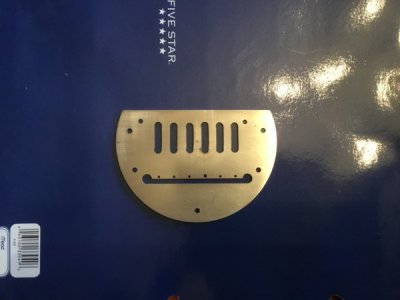Hi All
I am using the LMS micro mill with HHS end mills.
These slots are 3/16" wide and 5?8" long. I drill to 3/16" holes at the ends before the length-of-the-slot cut.
I dry run with the end mill just above the workpiece and it travels nicely along the proper line.
However, when I insert the end mill into the back side hole and then begin to slot towards the from end hole, I get the results you see pictured.
Why is the end mill going off track?
The third slot from the right is especially noticable.
Any and all advice is greatly appreciated. Go Bruins!

I am using the LMS micro mill with HHS end mills.
These slots are 3/16" wide and 5?8" long. I drill to 3/16" holes at the ends before the length-of-the-slot cut.
I dry run with the end mill just above the workpiece and it travels nicely along the proper line.
However, when I insert the end mill into the back side hole and then begin to slot towards the from end hole, I get the results you see pictured.
Why is the end mill going off track?
The third slot from the right is especially noticable.
Any and all advice is greatly appreciated. Go Bruins!

